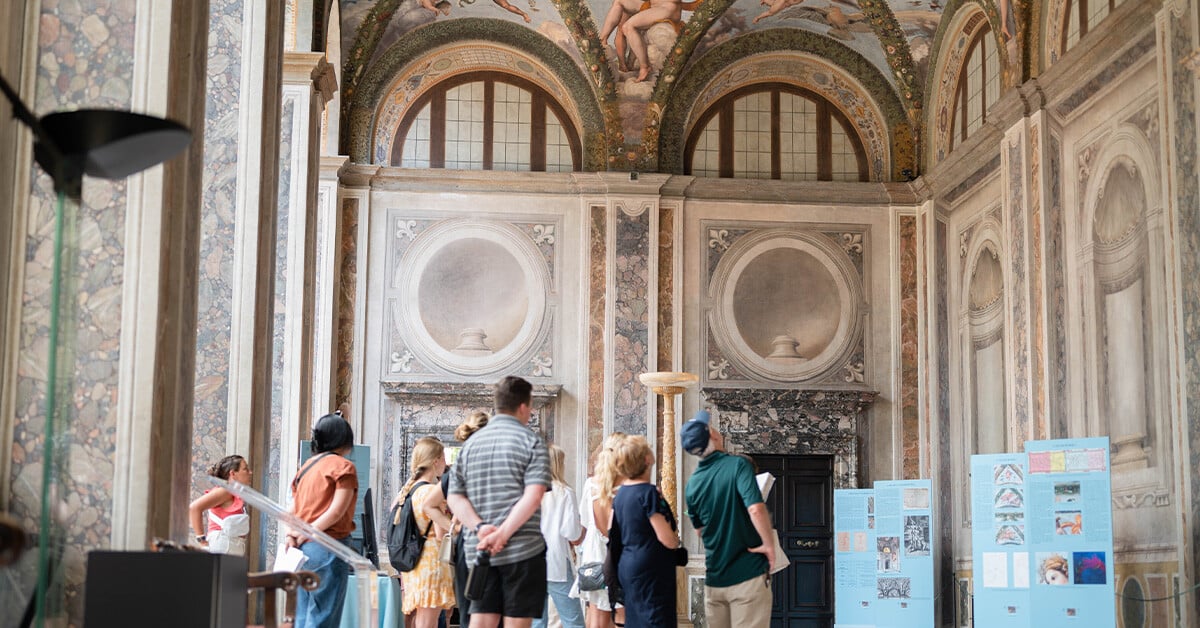

The role of a curator is a dream come true for many Art History graduates. These professionals are overseers and guardians of precious relics tasked with collecting, preserving, protecting, and sharing all that we have left of the past. If you’re considering a career in curating, earning an Art History degree from John Cabot University can be a crucial first step.
Our liberal arts school, located in one of the world’s most historically and artistically significant cities, offers a comprehensive Art History program. This program's curriculum is designed to prepare students for success in various art-related careers, including curating. Learn more about the role, discover the path to success, and see how we prepare you to thrive in this fascinating line of work.
Understanding the Role of a Curator
A curator plays a vital role in the art world, acquiring, caring for, and displaying a collection of artworks or historical artifacts. Curators work in museums, galleries, and cultural institutions, organizing exhibitions, conducting research, and contributing to the public’s understanding and appreciation of art. The role requires a deep knowledge of art history, strong organizational skills, and the ability to communicate effectively with artists, scholars, and the general public.
Curators must remain informed on current trends in the art world. They are instrumental in shaping how art is presented and interpreted, making their work essential for preserving cultural heritage and promoting artistic innovation.
Art History Degree and Beyond: Steps to Becoming a Curator
If you want to become an art curator, completing the following steps will ensure you get the education, experience, and industry knowledge necessary to stand out amongst other candidates.
- Earn an Art History Degree: The first step to becoming a curator is obtaining a solid educational foundation in art history. Our Art History degree provides a thorough grounding in the theories and analytic methods of art history.
- Gain Practical Experience: Internships and hands-on experience are crucial. We offer students opportunities to intern at prestigious institutions such as the Museo Nazionale Romano, the Galleria Doria Pamphilj, and the Biblioteca Angelica.
- Pursue Advanced Studies: While a bachelor’s degree can open many doors, many curators pursue advanced degrees, such as a Master’s or Ph.D. in Art History or Museum Studies.
- Develop a Specialty: Our program emphasizes the visual cultures of Rome, Italy, and the Mediterranean, allowing students to develop deep expertise in these areas, which can be a significant advantage in the curatorial field.
- Build a Portfolio: Aspiring curators should document their research, exhibition projects, and published work to create a strong portfolio. This can demonstrate their expertise and experience to potential employers.
 Develop the knowledge base you need to succeed when you study art history in Rome
Develop the knowledge base you need to succeed when you study art history in Rome
How John Cabot University Prepares Future Curators
John Cabot University’s Art History program is uniquely positioned to prepare students for a successful curatorial career. The program emphasizes critical thinking, encouraging students to explore fundamental questions about art and its role in society.
The curriculum includes four foundation courses that provide a broad overview of art history, followed by upper-level courses that allow students to delve deeper into specific periods, regions, and artistic movements. The culmination of the program is a senior thesis, where students conduct original research under the guidance of a specialized faculty member.
When you study Art History in Rome, you receive unparalleled access to the region’s rich artistic heritage. The city serves as an extended classroom, with its wealth of archaeological sites, churches, museums, and contemporary art galleries.
 Start your journey to a curating career in our art history degree program.
Start your journey to a curating career in our art history degree program.
Moreover, the faculty at John Cabot University consists of internationally recognized scholars who are active in their fields. These professors bring their research and professional experience into the classroom.
Becoming a curator is a multifaceted journey that combines academic study, practical experience, and a passion for art. John Cabot University’s Art History program offers a robust foundation for aspiring curators, providing the knowledge, skills, and opportunities needed to succeed in this competitive field.
Are you ready to attend our university in Italy?
Contact John Cabot University to learn more!




